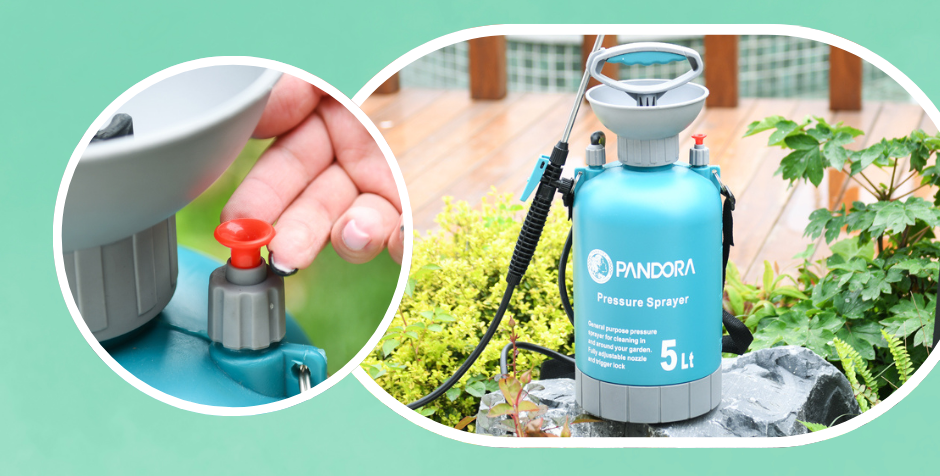Why the Safety Valve Matters on Your Garden Pressure Sprayer?
– Simple guide to what it does, how to fix it, and how to keep it working
If you use a garden pressure sprayer, there's one small part you should never ignore — the safety valve. It might be tiny, but it plays a big role in keeping you and your sprayer safe.
What Does the Safety Valve Do?

The safety valve is like a pressure relief button.
When you pump your sprayer, pressure builds up inside the tank. But too much pressure can damage the sprayer or even cause it to burst. That's where the safety valve comes in — it automatically releases air when the pressure gets too high, protecting you and your equipment.
Most valves are designed to open at around 120 psi (pounds per square inch).
Common Safety Valve Problems (and How to Fix Them)
Here are some typical issues you might run into with the safety valve, and how to deal with them:
| Problem | What It Means | What You Can Do |
| Valve won't open | Pressure stays trapped inside | Check for a stuck spring or debris, clean it out |
| Air keeps leaking | Seal might be damaged | Replace the rubber seal or the whole valve |
| Valve makes noise | Pressure may be unsteady | Clean it and make sure it's seated correctly |
| Valve is stuck shut |
|
Soak it in warm water and clean it gently |
How to Maintain the Safety Valve
Keeping your safety valve in good condition is simple, and it can help your sprayer last longer:
-
✅ Rinse it after each use — especially after spraying chemicals or fertilizers
-
✅ Check it monthly — make sure it opens and closes without problems
-
✅ Replace it once a year — or earlier if it's cracked or worn
-
✅ Store your sprayer in a dry place — to avoid rust or damage
Need Help with a Sprayer Safety Valve?
If you're not sure whether your valve is working right — or you need a new one — we're here to help.
👉 Click here to contact our team
References:
Previous Page
Next Page
Related News
An Untapped Resource in Combating Public Health Crises
As of May 2025, the U.S. has reported over 935 measles cases—triple the 2024 total—with outbreaks in 12 states and three confirmed deaths. This resurgence highlights vulnerabilities in public health infrastructure, particularly in undervaccinated communities. Simultaneously, agricultural sprayer technology, traditionally used for crop protection, offers an innovative solution for large-scale disinfection to curb pathogen spread.
Trigger Sprayer Troubleshooting Guide
Trigger sprayers are widely used in home gardens, cleaning tasks, and agricultural settings. Despite their simple structure, occasional malfunctions can affect their performance. At Pandora, we understand how frustrating it can be when your sprayer doesn’t work as expected. That’s why we’ve put together this troubleshooting guide to help you identify common problems and get your sprayer back in action quickly.
Irrigation Revolution Under the Global Water Crisis
As water scarcity intensifies worldwide, agriculture is at a crossroads. Traditional irrigation methods—once the backbone of crop production—are increasingly unsustainable in the face of diminishing water supplies and climate‐induced droughts. In contrast, high‐efficiency irrigation technologies promise to conserve water, boost yields, and secure food production for the future. This article explores the comparative advantages of traditional versus modern irrigation techniques, drawing on recent global and regional news.
Related Products







